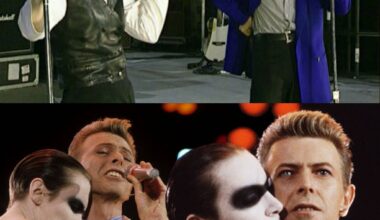Although David Gilmour had known Syd Barrett and Roger Waters since their school days, he wasn’t invited to join Pink Floyd until Barrett’s deteriorating mental health in 1967 began affecting the band. Gilmour’s entry into the group was as complicated and emotionally charged as his eventual departure.
Initially, Gilmour joined as a second guitarist, tasked with supporting Barrett, whose ability to contribute was rapidly declining. Despite the challenge, Gilmour quickly gained recognition for his uncanny ability to replicate Barrett’s distinctive playing style. Having spent his youth learning by ear from records, he adapted to Barrett’s idiosyncratic techniques with surprising ease—enhancing them with more refined musicianship.
After Barrett officially left the band at the end of 1967, Gilmour stepped up. He performed Barrett’s material from The Piper at the Gates of Dawn and also brought similar creative elements to A Saucerful of Secrets, shaping the band’s evolving sound.
By the end of the 1960s, Pink Floyd’s music had shifted away from the childlike psychedelia that defined Barrett’s era. It was becoming more expansive and ambient—a direction largely driven by Gilmour’s evolving guitar work. His tone and phrasing laid the groundwork for what would become the band’s signature sound in the 1970s progressive rock movement.
Like many of his generation, Gilmour’s first musical love was the blues. But he kept his influences broad, studying players from different genres and incorporating their techniques into his own. This eclectic foundation helped him forge a unique guitar style known for its emotional weight and clarity—focused more on expression than on speed.
In a 1985 interview with Guitar Classics, Gilmour described his wide-ranging inspirations. “I was a blues fan, but I was an all-around music fan,” he said. “From Leadbelly to B.B. King, and later Clapton, Roy Buchanan, Jeff Beck, Eddie Van Halen—even Mark Knopfler. He brought a refreshing tone to guitar playing that had been missing.”
Asked whether he had ever consciously borrowed from others, Gilmour was candid: “I was trying to learn 12-string acoustic like Leadbelly, lead guitar like Hank Marvin, and then Clapton. All of that worked its way into my playing.” He added that the best advice he could give any aspiring musician was simple: “I copied—don’t be afraid to copy. Eventually, something of your own will emerge.”
As time passed and his legacy grew, Gilmour became less concerned with studying others, but admitted he still absorbed inspiration when it struck. “These days, I don’t intentionally borrow licks, but if something fits, I’ll use it,” he said. “I’m sure Knopfler and Van Halen still influence me.”
Yet despite his reverence for Eddie Van Halen, Gilmour acknowledged a major gap in their styles: “I can’t play like Eddie Van Halen—I wish I could,” he confessed. “I’ve tried learning that kind of technique, but it doesn’t come naturally. I don’t know if I’ll ever really get the hang of it.”
While Van Halen filled every moment with lightning-fast precision, Gilmour’s approach thrived in the spaces between notes. He knew his strength wasn’t in technical wizardry—but in crafting melodies that resonated emotionally. And that, more than anything, defined his place in rock history.





